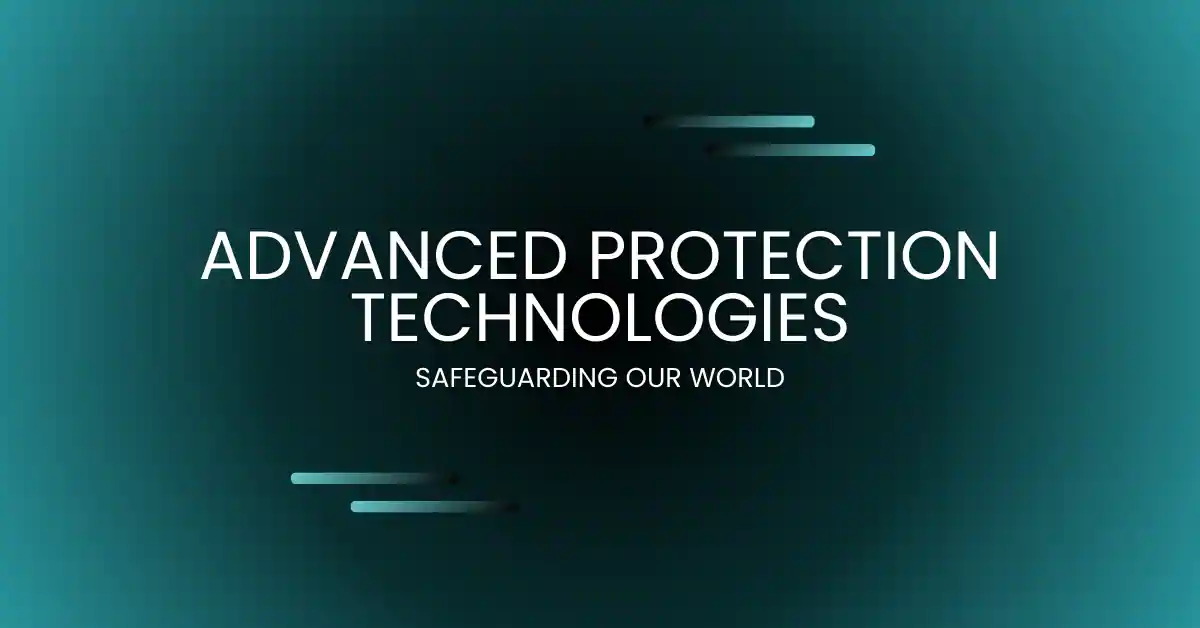In today’s world, safety and security are paramount. From protecting personal data to securing physical locations, advanced protection technologies are the unsung heroes we never knew we needed. They work tirelessly behind the scenes, often unnoticed, to shield us from potential threats. But what exactly are these technologies, and how do they impact our lives? Let’s dive in and explore!
Table of Contents
ToggleWhat Are Advanced Protection Technologies?
Definition and Scope
First and foremost, advanced protection technologies refer to sophisticated systems and tools designed to safeguard assets, data, and environments from various threats. These technologies encompass a wide range of applications, from cybersecurity measures that protect digital information to physical security systems that ensure the safety of buildings and facilities. In essence, they represent the cutting edge of safety solutions in an ever-evolving landscape.
Types of Advanced Protection Technologies
1. Cybersecurity Measures
In the digital age, cybersecurity is undoubtedly a critical aspect of protection technologies. As cyber threats become increasingly sophisticated, businesses and individuals must employ advanced measures to defend against data breaches, malware, and phishing attacks. For instance, technologies like firewalls, encryption, and intrusion detection systems form the backbone of cybersecurity, ensuring our information remains confidential and secure.
2. Physical Security Systems
While we often think of digital threats, physical security is just as vital. In fact, advanced surveillance systems, access control technologies, and alarm systems play a crucial role in protecting buildings and people. For example, smart cameras equipped with facial recognition can monitor entry points, while motion sensors alert security teams to unauthorized access. Thus, these systems work in harmony to create a robust defense against potential intruders.
3. Environmental Protection Technologies
Moreover, as the world faces environmental challenges, advanced protection technologies are stepping up. Innovations in pollution control, waste management, and energy efficiency help safeguard our planet for future generations. For instance, smart grids optimize energy use, while advanced filtration systems reduce pollutants. By utilizing these technologies, we can contribute to a healthier environment while promoting sustainable practices.
The Role of Artificial Intelligence in Protection
1. Predictive Analytics
Notably, Artificial Intelligence (AI) is revolutionizing advanced protection technologies. Through predictive analytics, AI can analyze vast amounts of data to identify patterns and predict potential threats. This proactive approach allows organizations to act before a threat materializes, significantly enhancing security measures. Whether it’s anticipating cyberattacks or foreseeing environmental risks, AI is truly a game-changer in protection strategies.
2. Machine Learning for Threat Detection
Furthermore, machine learning, a subset of AI, is another powerful tool in advanced protection technologies. By continuously learning from new data, machine learning algorithms can adapt to evolving threats. For example, in cybersecurity, these systems can recognize unusual patterns that may indicate a breach, allowing for swift responses. Therefore, the ability to learn and improve over time makes machine learning an invaluable asset in any protection strategy.
Benefits of Advanced Protection Technologies
1. Enhanced Security
The most obvious benefit of advanced protection technologies is enhanced security. By implementing these systems, individuals and organizations can significantly reduce the risk of breaches and attacks. With features like real-time monitoring, automated responses, and advanced threat detection, the safety of assets and data is fortified, providing peace of mind in an unpredictable world.
2. Increased Efficiency
Beyond security, advanced protection technologies also promote increased efficiency. For instance, automation and smart systems streamline processes, allowing for quicker responses to incidents and reducing the need for manual intervention. This efficiency not only saves time but also resources, ultimately leading to better productivity and operational effectiveness in both personal and professional settings.
Challenges and Considerations
1. Cost Implications
While the benefits are clear, there are challenges to consider, particularly regarding costs. Advanced protection technologies can require significant upfront investments, and not all organizations may have the budget for comprehensive solutions. Thus, balancing the need for security with financial constraints can be tricky, prompting many to seek scalable solutions that can grow with their needs.
2. Privacy Concerns
With great power comes great responsibility. Indeed, the implementation of advanced protection technologies, especially those involving surveillance and data collection, raises valid privacy concerns. Striking a balance between safety and individual privacy rights is crucial. Consequently, organizations must be transparent about their practices and ensure they comply with regulations to maintain public trust while leveraging these technologies.
Future Trends in Advanced Protection Technologies
1. Evolution of Biometric Systems
Looking ahead, the future of protection technologies appears promising, especially with the evolution of biometric systems. From fingerprint scanning to facial recognition, these technologies are becoming more sophisticated and widely accepted. As they continue to advance, we can expect even more reliable and secure methods of identification that enhance both personal and physical security.
2. Integration of IoT in Security Solutions
Moreover, the Internet of Things (IoT) is another game-changer in the realm of advanced protection technologies. With devices interconnected, security systems can work together seamlessly. For example, imagine a smart home where your security cameras, alarms, and even door locks communicate with each other in real time. This integration creates a comprehensive security ecosystem that enhances safety and responsiveness, making it easier to monitor and manage risks effectively.
Conclusion
In conclusion, advanced protection technologies are essential in our increasingly complex world. They offer solutions to safeguard our data, secure our environments, and protect our planet. By leveraging innovations in cybersecurity, physical security, and environmental protection, we can create a safer, more secure future. As we continue to evolve and embrace these technologies, it’s vital to balance their benefits with considerations for privacy and cost, ensuring a comprehensive approach to safety.
FAQs
1. What are advanced protection technologies?
Advanced protection technologies are sophisticated systems designed to safeguard assets, data, and environments from various threats, including cybersecurity measures and physical security systems.
2. How does AI enhance protection technologies?
AI enhances protection technologies through predictive analytics and machine learning, enabling proactive threat detection and response.
3. What are the benefits of implementing these technologies?
Key benefits include enhanced security, increased efficiency, and improved risk management.
4. Are there any privacy concerns with advanced protection technologies?
Yes, the implementation of surveillance and data collection technologies can raise privacy concerns, necessitating transparency and compliance with regulations.
5. What future trends should we expect in protection technologies?
Future trends include the evolution of biometric systems and the integration of IoT in security solutions, creating more connected and responsive security environments.






